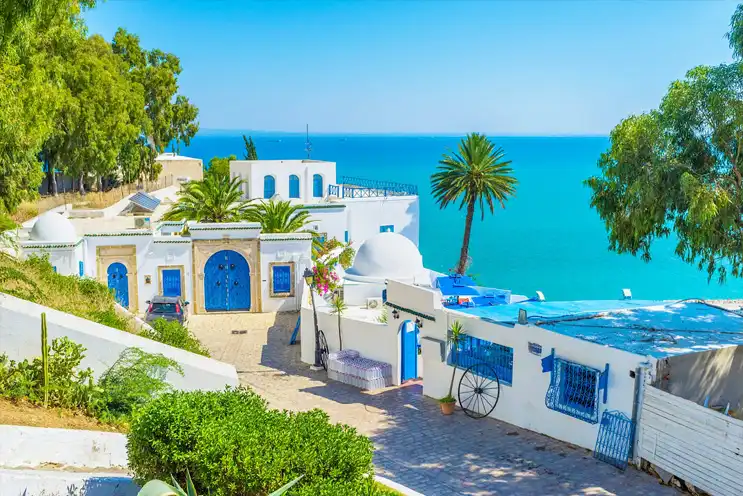Sidi Bou Said village captivates visitors with its unique beauty and originality. The place boasts cobbled streets adorned with fuchsia and white bougainvillea, along with intricate moucharabiehs. This small village, home to 5,000 inhabitants, holds the distinction of being the world’s first protected site. It is intimately connected to Carthage and was granted UNESCO World Heritage Site status in 1979. Sitting gracefully on a hill, Sidi Bou Said proudly overlooks Carthage. Its history dates back to Carthaginians and Romans, while in the 11th century, the Almoravids strategically settled here to safeguard the coast..
Mystical Origins
Sidi Bou Said’s mystique originates from Khalaf Ben Yahia Tamimi El Beji, who settled in Djebel Menara during the 11th century, teaching Sufism and guarding the coast. This period marked the beginning of the village’s mysticism, with sailors believing in his protective powers. After his death in 1231, a zaouia was constructed, signifying the village’s spiritual connection. In the 17th century, the village adopted its name to honor its protector, Sidi Bousaid.
Architectural Gems and Legacy
The village’s allure enticed the Tunisian bourgeoisie to construct splendid villas in an Arab-Andalusian architectural style. Despite the absence of a structured urban plan, the scattering of houses contributes to the village’s charm. Baron Rodolphe d’Erlanger played a pivotal role in preserving Sidi Bou Said’s essence. An enthusiast of arts and music, his efforts led to a 1915 decree that protected the village’s character, mandating the iconic blue and white color scheme. Today, the Maison d’Erlanger houses the Center for Arab and Mediterranean Music.
Timeless Escapes
Sidi Bou Said beckons both Tunisians and visitors to explore its narrow streets, inhale the fragrances of tea and jasmine, and immerse themselves in its serene ambiance. On weekends, the Café des Nattes and Café Sidi Chaabane come alive, exuding a leisurely atmosphere with traces of artistic inspiration left by writers and artists. Renowned figures such as Simone de Beauvoir, Colette, André Gide, and Michel de Foucault found endless fascination in these alleys. One envisions them at the Café des Nattes, sipping mint tea and absorbing the tranquility. Fortunate residents experience this unique ambiance daily, while tourists opt for transformed family houses turned charming guest rooms, relishing evenings in gourmet restaurants with sea-facing terraces. Every Tunisian has traversed the cobblestone streets, captivated by the distinctive two-toned houses that are Sidi Bou Said’s hallmark.

Comment (0)